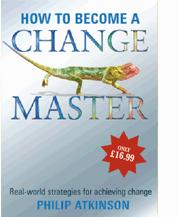Secrets of of Matrix Management are 'Mindset' and 'Culture' not 'Structure'

Implementing Matrix Management is about 'Mindset' and 'Culture'
Matrix Management is probably the ideal form of organisation for dealing with the complexities of change. Matrix Management enables organisations to allocate resources, notably people, to special projects yet still maintain their expertise in a functional setting.
Although people have a functional specialty to which they can retreat after the successful completion of projects, they still have a strong affinity for working with other team players outside their technical speciality.
Personality & the 'Matrix of the Mind'
Gone are the days when a 'blue book' will specify how people and teams work together. No amount of elaborate exploration and narrative will capture the special conditions which are a precondition for effective matrix management.
You see, matrix management is a mindset first and an organisational form second. If you cannot conceive of working within a matrix, then in all likelihood you probably will not be able to build it.
If you fail to make order out of chaos, and if you prefer to know with certainty what is expected of you each day, then you probably will not fit in to the matrix mindset.
Matrix Mindset: Curiosity and a liking for Ambiguity
Curiosity is a major characteristic of those who work in an effective matrix organisation. They will not share the same character traits as their 'closed loop' colleagues, who have to understand every role and every responsibility they manage.
Matrix organisation is for free thinkers who are less than orthodox, but also share the commitment to work together by resolving differences and developing 'win-win' solutions.
Transformational Mindset
Warren Bennis coined the term 'Leadership is like herding cats'. I know he was right because herding people together into a complex organisation requires a different mindset than traditional management would suggest.
Management is very much transactional in nature, requiring clarity and precision in knowing what to do and how to do it in order to achieve goals. This was fine for peopling the old organisational structures, but is no longer relevant today.
We require a more independent 'maverick' mindset that comes only when people and leaders recognise they need to transform their businesses, and they cannot do this slowly.
Speed as Competitive Differentiator
Speed is of the essence. As product life cycles shorten and collapse in on themselves, we who are driving change need to recognise that the old, orthodox, analytic approaches are no longer appropriate
Each problem surfacing is like a 'fast breaking news story,' and we need leaders who are nimble on their feet and not constrained by their perceived description of duties and roles.
We require a more forward thinking leader who is curious to explore beyond what is currently known about a problem, and is prepared to develop relationships quickly with others who have some expertise in the partial solution of the problem.
Speed of Thinking - A Competitive Advantage
Quick thinking is not just a desired trait, but is compulsory for today's leaders. Working effectively in a matrix is critical, because when people talk of matrix structures and confuse themselves with the two of differentiation and integration and the degree to which they have to be integrated.
We have progressed way beyond structures to creating a matrix culture, where ambiguity is expected and the norm, and a 'solutions focus' the only remedy to confusion.
A Matrix Culture first has to precede a Structure
This is where the confusion has lain for some time. Since the early NASA days, when there was an over-reliance on integrating mechanisms in the structure to ensure smooth working across disciplines and sciences, management thinkers have been trying to come up with more and more complex methodologies that would bind highly differentiating organisational units and functions together in a giant bowl of spaghetti soup.
Here we would encounter so many different variants within the 'soup' which could coexist and appear normal and natural, when they were not. Currently ‘thinking’ on our ability to analyse our way out of this approach to matrix management does not work without building the culture first will not work.
Behaviour & Culture rather than Technology Creates the Matrix Organisation
As the technology exists to assist multiple integration of complex specialised organisational units or functions few give consideration to those who have to lead, manage and deliver within this form of organisation.
Flexible Mindset in Matrix Structure
The only way around this problem is to understand there is no ‘one best way of working’. There are multiple feedback loops required to ensure that everyone developing the matrix sees the bigger picture. Probably, most importantly it is best to promote the idea that managers have to adopt a very different mindset and set of behaviours tol help people learn how to operate within the matrix culture.
The Matrix of Your Mind: Emotional Intelligence
What is conceived through multiple debate and forming of new relationships will be the answer to how people can work together in virtual worlds and businesses.
Yesterday, we thought we knew how to do business - there is a good chance today we can improve on that tomorrow - given we are not constrained by yesterday's thinking.
We improve on it through what many call our EQ (emotional intelligence), and how we learn from others. Business is all about relationships. The quality of our business relationships changes, as we learn more about how we work together more effectively in a matrix.
Psychometrics and Working Style
For those who know about psychometrics, you will be aware that we have always focused on trying to match an ideal candidate to the requirements of the role. What implications does this have for those who work in a matrix structure?
We have to admit that the role of the job holder will change as they operate within the matrix, and the only sure competence they will require is the ability to build relationships both horizontally and vertically in the matrix which will enable them to understand how the organisational form can work.
Behaviours That Create the Matrix Culture
The complexities of matrix management come down to a set of behaviours or competencies that, until recently, have been undervalued in business. These behaviours will tend to reflect the social and behavioural skills of negotiating, learning, and persuading others to new perspectives.
Of course, analytic ability is still critical, as are methods of impersonal analysis on occasion, but the requirement to stretch beyond what many consider to be feminine traits and behaviours will be what make the matrix work.
In our work in helping others create, implement and sustain matrix cultures, we are always focusing on core behaviours that will add the momentum.
For more details of our approach, please contact us direct
Matrix Management is probably the ideal form of organisation for dealing with the complexities of change. Matrix Management enables organisations to allocate resources, notably people, to special projects yet still maintain their expertise in a functional setting.
Although people have a functional specialty to which they can retreat after the successful completion of projects, they still have a strong affinity for working with other team players outside their technical speciality.
Personality & the 'Matrix of the Mind'
Gone are the days when a 'blue book' will specify how people and teams work together. No amount of elaborate exploration and narrative will capture the special conditions which are a precondition for effective matrix management.
You see, matrix management is a mindset first and an organisational form second. If you cannot conceive of working within a matrix, then in all likelihood you probably will not be able to build it.
If you fail to make order out of chaos, and if you prefer to know with certainty what is expected of you each day, then you probably will not fit in to the matrix mindset.
Matrix Mindset: Curiosity and a liking for Ambiguity
Curiosity is a major characteristic of those who work in an effective matrix organisation. They will not share the same character traits as their 'closed loop' colleagues, who have to understand every role and every responsibility they manage.
Matrix organisation is for free thinkers who are less than orthodox, but also share the commitment to work together by resolving differences and developing 'win-win' solutions.
Transformational Mindset
Warren Bennis coined the term 'Leadership is like herding cats'. I know he was right because herding people together into a complex organisation requires a different mindset than traditional management would suggest.
Management is very much transactional in nature, requiring clarity and precision in knowing what to do and how to do it in order to achieve goals. This was fine for peopling the old organisational structures, but is no longer relevant today.
We require a more independent 'maverick' mindset that comes only when people and leaders recognise they need to transform their businesses, and they cannot do this slowly.
Speed as Competitive Differentiator
Speed is of the essence. As product life cycles shorten and collapse in on themselves, we who are driving change need to recognise that the old, orthodox, analytic approaches are no longer appropriate
Each problem surfacing is like a 'fast breaking news story,' and we need leaders who are nimble on their feet and not constrained by their perceived description of duties and roles.
We require a more forward thinking leader who is curious to explore beyond what is currently known about a problem, and is prepared to develop relationships quickly with others who have some expertise in the partial solution of the problem.
Speed of Thinking - A Competitive Advantage
Quick thinking is not just a desired trait, but is compulsory for today's leaders. Working effectively in a matrix is critical, because when people talk of matrix structures and confuse themselves with the two of differentiation and integration and the degree to which they have to be integrated.
We have progressed way beyond structures to creating a matrix culture, where ambiguity is expected and the norm, and a 'solutions focus' the only remedy to confusion.
A Matrix Culture first has to precede a Structure
This is where the confusion has lain for some time. Since the early NASA days, when there was an over-reliance on integrating mechanisms in the structure to ensure smooth working across disciplines and sciences, management thinkers have been trying to come up with more and more complex methodologies that would bind highly differentiating organisational units and functions together in a giant bowl of spaghetti soup.
Here we would encounter so many different variants within the 'soup' which could coexist and appear normal and natural, when they were not. Currently ‘thinking’ on our ability to analyse our way out of this approach to matrix management does not work without building the culture first will not work.
Behaviour & Culture rather than Technology Creates the Matrix Organisation
As the technology exists to assist multiple integration of complex specialised organisational units or functions few give consideration to those who have to lead, manage and deliver within this form of organisation.
Flexible Mindset in Matrix Structure
The only way around this problem is to understand there is no ‘one best way of working’. There are multiple feedback loops required to ensure that everyone developing the matrix sees the bigger picture. Probably, most importantly it is best to promote the idea that managers have to adopt a very different mindset and set of behaviours tol help people learn how to operate within the matrix culture.
The Matrix of Your Mind: Emotional Intelligence
What is conceived through multiple debate and forming of new relationships will be the answer to how people can work together in virtual worlds and businesses.
Yesterday, we thought we knew how to do business - there is a good chance today we can improve on that tomorrow - given we are not constrained by yesterday's thinking.
We improve on it through what many call our EQ (emotional intelligence), and how we learn from others. Business is all about relationships. The quality of our business relationships changes, as we learn more about how we work together more effectively in a matrix.
Psychometrics and Working Style
For those who know about psychometrics, you will be aware that we have always focused on trying to match an ideal candidate to the requirements of the role. What implications does this have for those who work in a matrix structure?
We have to admit that the role of the job holder will change as they operate within the matrix, and the only sure competence they will require is the ability to build relationships both horizontally and vertically in the matrix which will enable them to understand how the organisational form can work.
Behaviours That Create the Matrix Culture
The complexities of matrix management come down to a set of behaviours or competencies that, until recently, have been undervalued in business. These behaviours will tend to reflect the social and behavioural skills of negotiating, learning, and persuading others to new perspectives.
Of course, analytic ability is still critical, as are methods of impersonal analysis on occasion, but the requirement to stretch beyond what many consider to be feminine traits and behaviours will be what make the matrix work.
In our work in helping others create, implement and sustain matrix cultures, we are always focusing on core behaviours that will add the momentum.
For more details of our approach, please contact us direct
| coaching_for_matrix_management.pdf | |
| File Size: | 757 kb |
| File Type: | |

